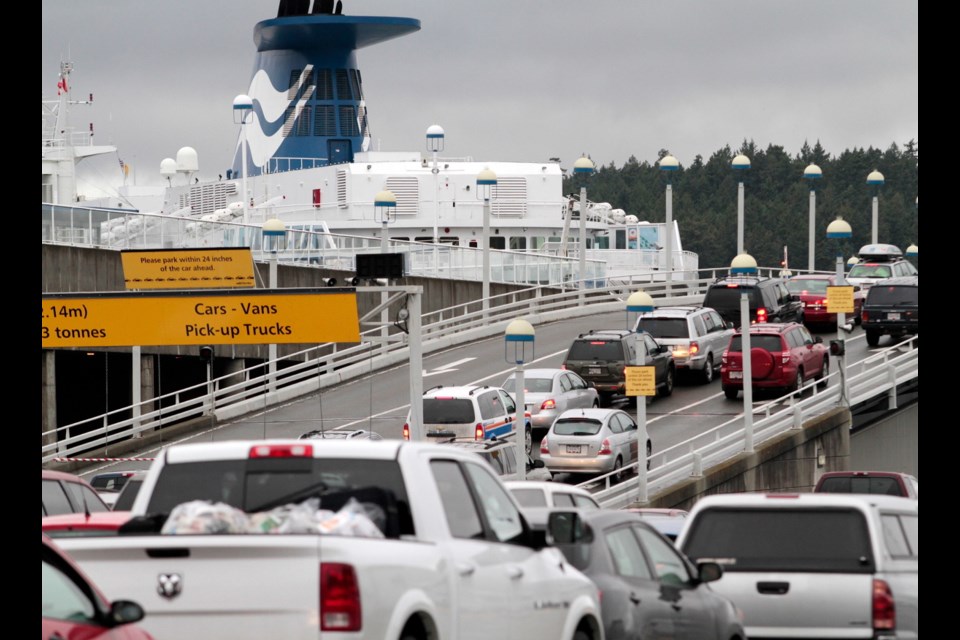The blueprint for ferry cuts released on Nov. 18 shows how far into the details the government is reaching to save money.
For instance, they want to cancel the 7 a.m. sailing from Alliford Bay on Moresby Island to Skidegate on Graham Island in Haida Gwaii. The blueprint analyzed that route and every single other small ferry run on the coast to build a case for each cut.
That particular sailing runs at as low as five per cent capacity. Over the year, the boat runs at an average 20 per cent capacity. It carried 87,000 passengers and cost $4.81 million more than it made in fares last year.
With similar profiles for every affected route, it looks like every single part of B.C. Ferries has been scrutinized.
But there鈥檚 one component that is sailing clear of any curtailments. Predictably enough, it鈥檚 at the very top.
The board of directors has weathered all the cutting that鈥檚 been going on lately. The more you look at the recent history of the corporation, the more you wonder why.
It鈥檚 obvious to all now that the government has retaken control and authority over B.C. Ferries. And if the government is going to set policy, as it did this week, what鈥檚 the point of having a board of directors?
It鈥檚 a particularly valid question because it鈥檚 a fairly expensive board of directors.
Board chairman Donald Hayes collected $100,323 for the year ending last March, according to the annual report filed with securities authorities.
Eight other directors made between $25,000 and $51,000.
The total cost of the board stipends was $442,000. They and their immediate family members also get travel passes.
If the budget hawks are fine-tuning their targets to the point of looking at things like cutting the 10 p.m. sailing from Quadra Island to Campbell River, why aren鈥檛 they looking at the $442,000 that鈥檚 there for the taking?
The board no doubt spends its meetings going over high-level policy and setting directions. But it also spends a lot of its time setting executive compensation levels. It was directly responsible for the bonus payments that went to some senior executives last year. Those prompted Transportation Minister Todd Stone to intervene and demand a rollback, which was accomplished to some degree when ferries management replaced bonuses with holdbacks.
It goes down as a bad decision by the board. It also goes down as a decision that was overturned by a cabinet minister.
That鈥檚 become a routine part of the B.C. Ferry decision-making through the last few years of fiscal crises. The B.C. Liberal cabinet waded in to curtail salaries four years ago, then barged in two years later to ease plans for whopping fare hikes.
Then it facilitated independent ferry commissioner Gordon Macatee鈥檚 idea for a comprehensive review of the financial crunch the fleet is facing. Then it essentially took over the response to those dire findings, conducting the entire process that led to the route reductions announced this week.
It wasn鈥檛 B.C. Ferries that announced the route reductions, the end of the free midweek rides for seniors and the slot machines that are coming. It was Transportation Minister Todd Stone.
That news conference cemented the impression that the redesign made in 2003 to divorce B.C. Ferries from political interference just doesn鈥檛 make any sense any more.
On paper, the corporation is overseen by a $442,000-a-year board of directors. And that board is overseen by another board, representing the B.C. Ferry Authority, which is the entity that owns the company on behalf of the government. That board cost more than $120,000 last year in stipends and held four meetings.
Meanwhile, the fares and service levels and various operational details are overseen by the B.C. Ferry Commission, which ran on a $300,000 budget in its last reported year.
And the whole confusing enterprise is overseen by a cabinet that steps in whenever it feels the need.
There鈥檚 one person who seems to have full authority over B.C. Ferries. It鈥檚 whoever happens to be transportation minister. The other two boards of directors should go the way of the 11 p.m. boat to Blubber Bay.



